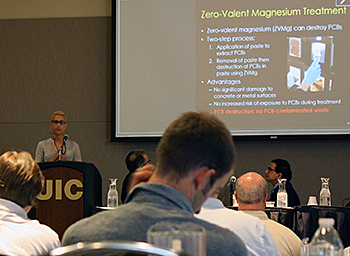 Videos of presentations at ISTC’s anniversary event provide a fascinating look at problems of pollution contamination in Illinois and how the Center contributed to the clean up. Links to the videos will be made available over the next two weeks as they become available.
Videos of presentations at ISTC’s anniversary event provide a fascinating look at problems of pollution contamination in Illinois and how the Center contributed to the clean up. Links to the videos will be made available over the next two weeks as they become available.
ISTC Looks Back, and to the Future During Anniversary
VIDEO 10: Mark Ryan After leading the assembly in “Happy Birthday” to ISTC, Ryan shared a brief survey of the history of “sustainability in the modern context.” In 1980, sustainable development was called a global priority in “World Conservation Strategy” published by the International Union for of Conservation of Nature.
The United Nation’s Bruntland Commission defined it in 1987: “Sustainable development is development that meets the needs of the present without compromising the ability of future generations to meet their own needs.”
But sustainability in the sense of natural resources goes back thousands of years to so many cultures across the globe that Ryan said he was comfortable labeling it a “universal truth.”
For examples in ancient times he cited, “Deuteronomy’s” caution not to kill female birds with young, forest management practiced in the Han Dynasty, and the Roman latifundium which managed the production of wood and other crops. Ryan noted that when Rome fell, and latifundia disappeared, so did many of the forests in Italy and France.
Ryan continued to offer examples of preserving resources for future use through the centuries, right up to the establishment of the Illinois Sustainable Technology Center in 1985.
ALL VIDEOS and other ISTC 30th Anniversary information is available at this ISTC web page.









